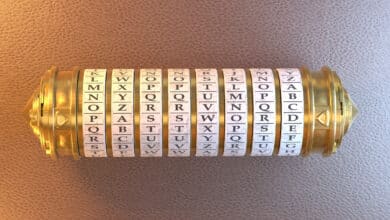Q-Day
PostQuantum.com by Marin Ivezic – Quantum Security, PQC, Quantum Resistance, CRQC, Q-Day, Y2Q
-
Cryptographically Relevant Quantum Computers (CRQCs)
Cryptographically Relevant Quantum Computers (CRQCs) represent a seismic shift on the horizon of cybersecurity. In this article, we’ve seen that CRQCs are defined by their ability to execute quantum algorithms (like Shor’s and Grover’s) at a scale that breaks the cryptographic primitives we rely on daily. While still likely years…
Read More » -
Neven’s Law: The Doubly Exponential Surge of Quantum Computing
In 2019, Google’s Quantum AI director Hartmut Neven noticed something remarkable: within a matter of months, the computing muscle of Google’s best quantum processors leapt so quickly that classical machines struggled to keep up. This observation gave birth to “Neven’s Law,” a proposed rule of thumb that quantum computing power…
Read More » -
CRQC Readiness Index Proposal
This proposal outlines a composite, vendor‑neutral “CRQC Readiness” indicator. It intentionally avoids one‑number vanity metrics (like only counting qubits) and instead triangulates from three ingredients that actually matter for breaking today’s crypto: usable (logical) qubits, error‑tolerant algorithm depth, and sustained error‑corrected operations per second.
Read More » -
Q-Day (Y2Q) vs. Y2K
In the late 1990s, organizations worldwide poured time and money into exorcising the “millennium bug.” Y2K remediation was a global scramble. That massive effort succeeded: when January 1, 2000 hit, planes didn’t fall from the sky and power grids stayed lit. Ever since, Y2K has been held up as both…
Read More » -
What’s the Deal with Quantum Computing: Simple Introduction
Quantum computing holds the potential to revolutionize fields where classical computers struggle, particularly in areas involving complex quantum systems, large-scale optimization, and cryptography. The power of quantum computing lies in its ability to leverage the principles of quantum mechanics—superposition and entanglement—to perform certain types of calculations much more efficiently than…
Read More » -
Brassard–Høyer–Tapp (BHT) Quantum Collision Algorithm and Post-Quantum Security
The Brassard–Høyer–Tapp (BHT) algorithm is a quantum algorithm discovered in 1997 that finds collisions in hash functions faster than classical methods. In cryptography, a collision means finding two different inputs that produce the same hash output, undermining the hash’s collision resistance. The BHT algorithm theoretically reduces the time complexity of…
Read More » -
Shor’s Algorithm: A Quantum Threat to Modern Cryptography
Shor’s Algorithm is more than just a theoretical curiosity – it’s a wake-up call for the security community. By understanding its principles and implications, we can appreciate why the cryptographic landscape must evolve. The goal of this guide is to equip you with that understanding, without delving into complex mathematics,…
Read More » -
Grover’s Algorithm and Its Impact on Cybersecurity
Grover’s algorithm was one of the first demonstrations of quantum advantage on a general problem. It highlighted how quantum phenomena like superposition and interference can be harnessed to outperform classical brute force search. Grover’s is often described as looking for “a needle in a haystack” using quantum mechanics.
Read More »







